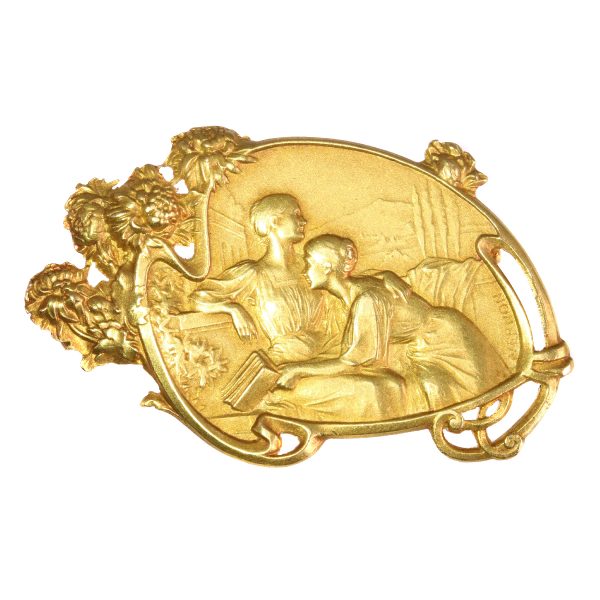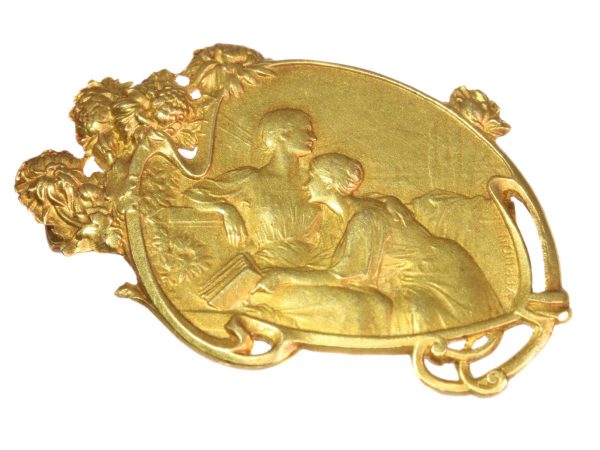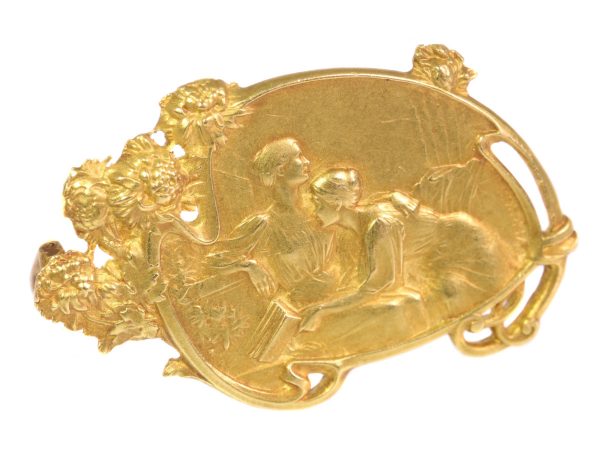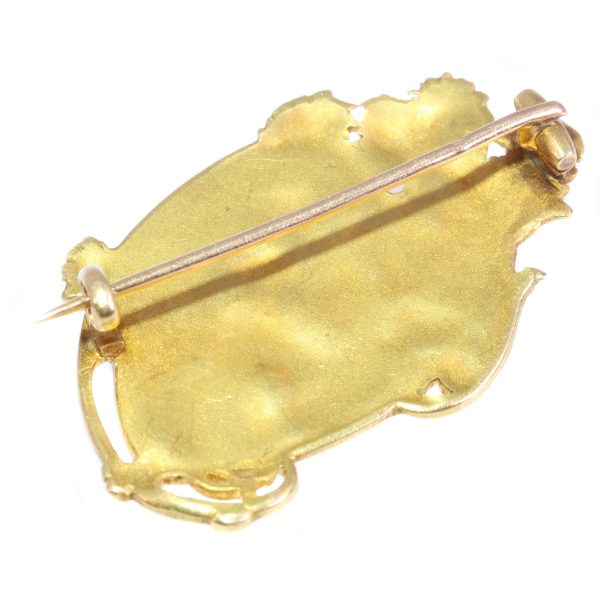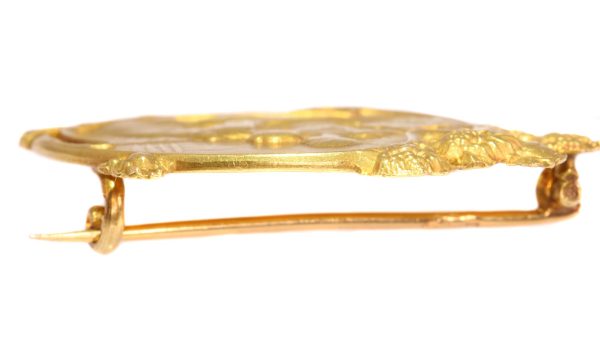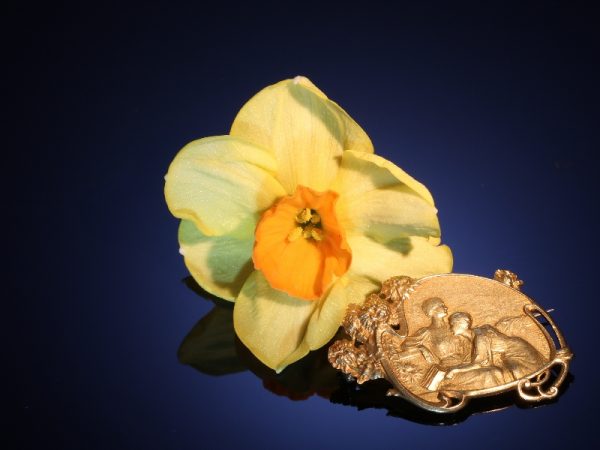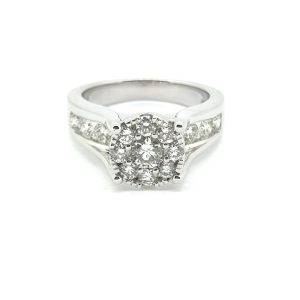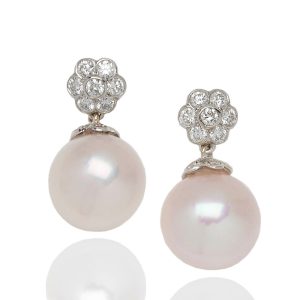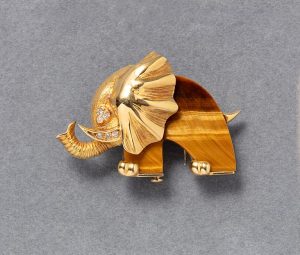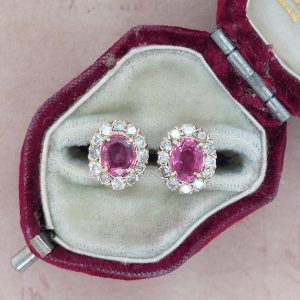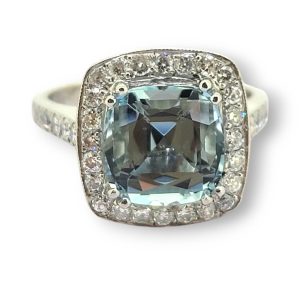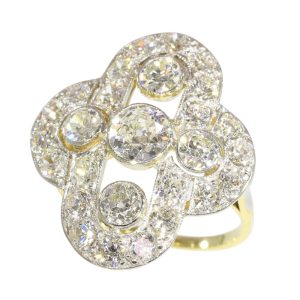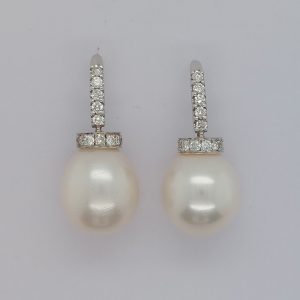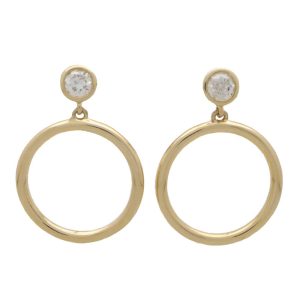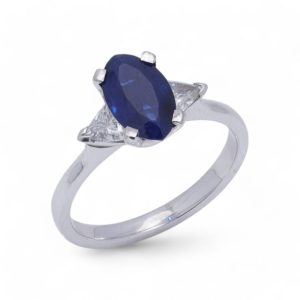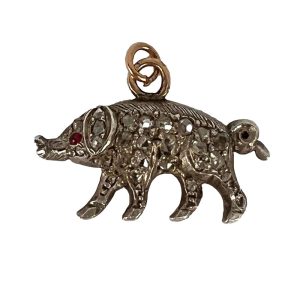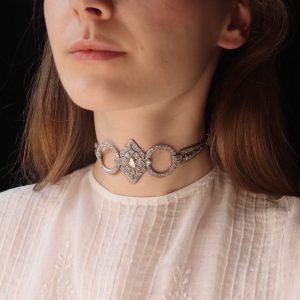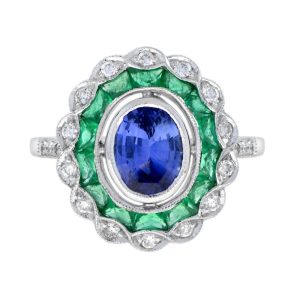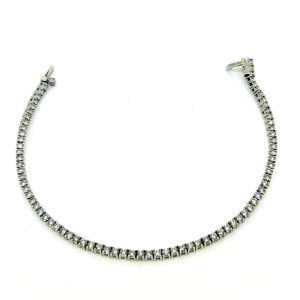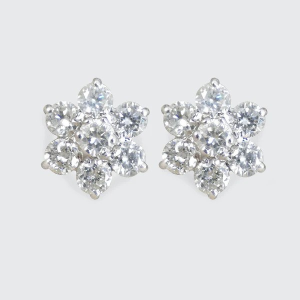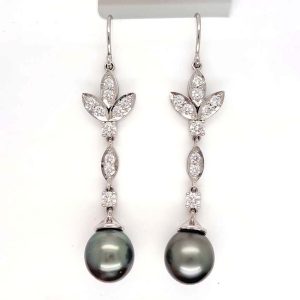Antique Art Nouveau Vernon 18ct Gold Brooch Depicting Friendship Between Two Women
As the established craftsman Vernon is, he must have constructed the idyllic scenery of this 18ct yellow gold French Art Nouveau brooch fully out of symbols. On the background, we notice cypresses as a symbol of mourning. On the front, we believe to recognize a bush of edelweiss as a symbol of nobility, devotion and deep love. The window to this view is surrounded by chrysanthemum as a symbol of life, joy and optimism.
Or… this piece of jewellery could just be about two women enjoying each other’s company while reading a book and enjoying the sensational sight. A sight with on the left side a majestic building from behind the intimate garden spot while on the right side cypresses leading up to a mountain.
But… if we connect this bare description with the flower connotations, suddenly we find ourselves in a story of memories to a lighthearted time, of everlasting friendship and of hope of a reunion.
True symbolism of an artist or just figments of a jewellery aficionado, this jewel is what it is: a vessel of emotion.
Antique jewellery object group: brooch
Condition: excellent condition
Country of origin: France
Style: Art Nouveau РArt Nouveau (French for New Style) is an international movement and style of art, architecture and applied art Рespecially the decorative arts Рthat peaked in popularity at the turn of the 20th century (1890–1905).
The name “Art Nouveau” is French for “new art”. It is also known as Jugendstil, German for “youth style”, named after the magazine Jugend, which promoted it, and in Italy, Stile Liberty from the department store in London, Liberty & Co., which popularised the style, and in Holland as ‚ÄúSla-olie-stijl‚Äù, Dutch for ‚Äúsalad oil style‚Äù after a advertisement poster for this product that was made in that style.
A reaction to academic art of the 19th century, it is characterized by organic, especially floral and other plant-inspired motifs, as well as highly stylized, flowing curvilinear forms. Art Nouveau is an approach to design according to which artists should work on everything from architecture to furniture, making art part of everyday life. Although Art Nouveau fell out of favour with the arrival of 20th-century modernist styles, it is seen today as an important bridge between the historicism of neoclassicism and modernism.
Style specifics: Art Nouveau – Although Art Nouveau took on distinctly localised tendencies as its geographic spread increase some general characteristics are indicative of the form. A description published in Pan magazine of Hermann Obrist’s wall-hanging Cyclamen(1894) described it as “sudden violent curves generated by the crack of a whip”, which became well known during the early spread of Art Nouveau.
Subsequently, not only did the work itself become better known as The Whiplash, but the term “whiplash” is frequently applied to the characteristic curves employed by Art Nouveau artists. Such decorative “whiplash” motifs, formed by dynamic, undulating, and flowing lines in a syncopated rhythm, are found throughout the architecture, painting, sculpture, and other forms of Art Nouveau design.(from: Wikipedia)
Period: ca. 1900
Theme: Friendship between two women
Material: 18ct yellow gold
Extra information: Vernon – His full name is Fr√©d√©ric de Vernon and he was born in 1858. He went to the decorative arts school. Some of his admirable pendants are: ‚Äòla Saint C√©cile‚Äô (Saint Cecile) made in 1896, ‚Äòla Gailla‚Äô (the Gailla) in 1897, ‚Äòl‚Äô Amour‚Äô (the love) and ‚Äòla Vi√®rge‚Äô (the virgin) in 1898), ‚Äòle Jour‚Äô (the day), ‚Äòla Nuit‚Äô (the night), ‚Äòl‚Äô Aurore‚Äô (Aurora) and ‚Äòle Cr√©puscule‚Äô (the twilight) in 1899 and 1900. The most famous of his works is the thimble that PresidentKr√ºger of South Africa offered to Queen Wilhelmine of the Netherlands for her wedding. It represents a group of Parisian seamstresses. The master’s tiepin measures
Signature: Vernon
Hallmarks: The French control mark for 18ct gold representing an eagle’s head that was in use in France from about 1838.
Dimensions: 3,50 cm (1,38 inch) x 2,15 cm (0,85 inch)
Weight: 8,30 gram (5,34 dwt)
Product SKU
AD-18082-0159
Sold
Sold Out

